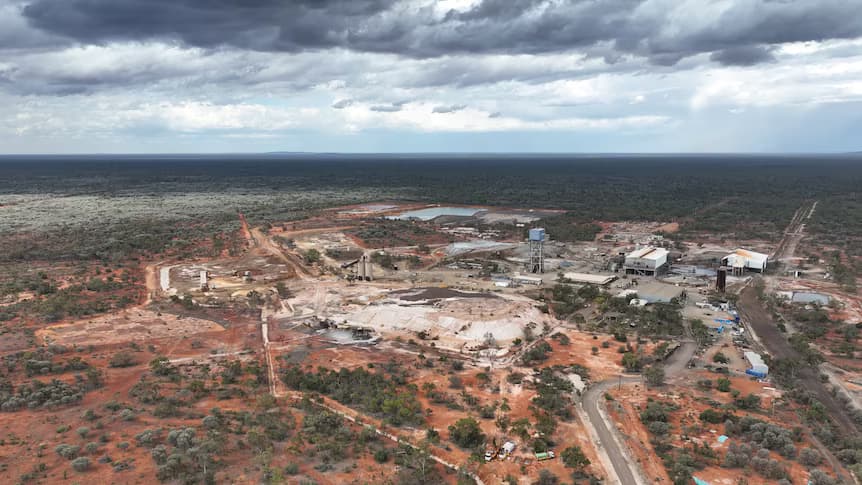We're loading the full news article for you. This includes the article content, images, author information, and related articles.
A fatal underground explosion at a newly reopened Australian mine highlights the critical need for robust safety standards, a pressing issue as Kenya seeks to expand its own mining sector with Australian expertise.

COBAR, AUSTRALIA – A tragic underground explosion at the Endeavor silver, zinc, and lead mine in Cobar, New South Wales, has resulted in the deaths of two miners, prompting a full-scale investigation and casting a renewed spotlight on the inherent dangers of the mining industry. The incident, which occurred in the early hours of Tuesday, October 28, 2025, serves as a stark reminder of the critical importance of workplace safety protocols, a pertinent lesson for Kenya as it actively courts Australian investment and expertise to develop its own burgeoning extractive sector.
Emergency services were called to the mine, located approximately 700 kilometres northwest of Sydney, at around 3:45 AM local time (7:45 PM EAT, Monday) following reports of a critical incident. New South Wales Police confirmed that a male worker, believed to be in his 60s, was pronounced dead at the scene. Two female workers, both in their 20s, were brought to the surface; one tragically succumbed to her injuries shortly after, while the other was airlifted to a hospital with non-life-threatening injuries, including hearing damage and shock. All three employees were residents of the small, tight-knit mining community of Cobar.
The Endeavor mine, owned by Polymetals Resources, had only recently restarted operations this year after being acquired in 2023. The mine was previously operational from 1982 until 2020, when it was placed under maintenance. In response to the fatal blast, Polymetals has temporarily suspended all mining operations and requested a two-day trading halt on its shares. Dave Sproule, the company's Executive Chairman, stated they were "shocked and saddened by the tragic incident" and are cooperating fully with all relevant authorities.
An official investigation is now underway, led by the NSW Resources Regulator and SafeWork NSW, to determine the cause of the explosion. The NSW Mine Workers' Alliance, a union representing miners, has called for an "open and transparent investigation," emphasizing that "safety over production" must be the priority. The incident has sent shockwaves through the Australian mining industry, with NSW Premier Chris Minns describing it as a "heartbreaking day" and a "sobering reminder of why we need to always remain vigilant to protect workers."
The tragedy in Australia resonates deeply with Kenya's current strategic objectives. The Kenyan government is actively working to increase the mining sector's contribution to the national GDP from less than one percent to ten percent by 2030. This ambitious goal involves attracting significant foreign investment, with Australian firms being key partners. Several Australian companies are already active in Kenya, including Base Titanium, which operates the Kwale Mineral Sands Project and accounts for a significant portion of Kenya's mineral output value. Other firms like RareX and Iluka Resources are exploring for valuable rare earth elements.
Just this month, on October 14, 2025, Prime Cabinet Secretary Musalia Mudavadi met with Australia's Assistant Minister for Foreign Affairs, Matt Thistlethwaite, in Nairobi to discuss deepening cooperation in the extractives sector. Mr. Mudavadi affirmed Kenya's commitment to learning from Australia's robust and well-regulated mining industry to ensure sustainable resource management and job creation. This collaboration makes the safety standards and regulatory frameworks in Australia—and their occasional, tragic failures—directly relevant to the policy-making process in Nairobi.
While Kenya seeks to emulate Australia's success, it faces significant domestic challenges in regulating its own mining activities, particularly in the artisanal and small-scale mining (ASM) sector. The ASM sector is a vital source of livelihood for many rural communities but is often characterized by informal operations and hazardous working conditions, leading to frequent accidents. Recent incidents, such as mine collapses in West Pokot and Kakamega counties, have highlighted the urgent need for improved safety enforcement and training for local miners.
The Cobar incident underscores that even in a country with one of the world's most advanced regulatory frameworks for mining, catastrophic failures can occur. As Kenya develops its legal and regulatory infrastructure, including the ongoing development of a 20-year National Marine Spatial Plan to manage offshore resources like minerals, the lessons from this Australian tragedy will be invaluable. Ensuring that robust, enforceable safety protocols are at the core of the sector's expansion will be critical to protecting Kenyan workers and building a truly sustainable and beneficial mining industry for the nation.
Keep the conversation in one place—threads here stay linked to the story and in the forums.
Other hot threads
E-sports and Gaming Community in Kenya
Active 6 months ago
Popular Recreational Activities Across Counties
Active 6 months ago
The Role of Technology in Modern Agriculture (AgriTech)
Active 6 months ago
Investing in Youth Sports Development Programs
Active 6 months ago